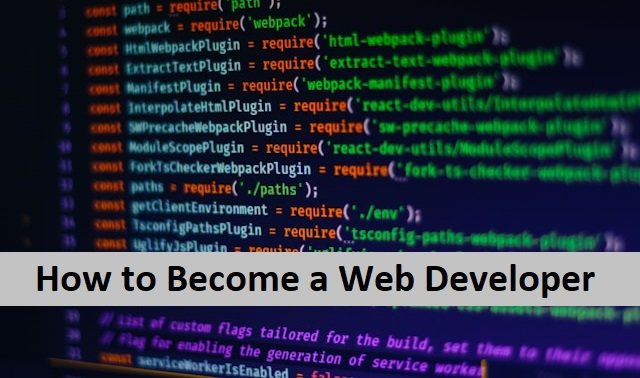The role of HTML email is not a secret for developers. These emails are specially designed for marketing purposes. These are well-formatted emails that attract audiences using different marketing tactics. However, creating an HTML email is not a piece of cake.
These specially designed emails need professionals to do so. Free templates are also available, which you can use to create these emails. This article will discuss the complete overview of HTML emails, how to create and the benefits of using them.
What Is An HTML Email?
HTML stands for HyperText Markup Language. Developers are familiar with the use of HTML in the development of websites. And this is the exact language used in creating HTML emails. These emails differ from plain emails because they allow you to format and design them in style.
It means that if you see an email with some styling, it is HTML. These emails appear more professional, formal, and, yes, appealing because you can add images, use colors, and change the text font. These emails are typically used for marketing purposes and are specially designed, which is only possible with HTML.
Why Should You Choose HTML Emails
HTML email, as opposed to plain email, is a more advanced way of sending information stylishly. You can only get users’ attention in a competitive market if you offer them something engaging and appealing.
HTML email is a full web page with images, stylish and colorful text, and much more delivered directly to the user’s inbox. When a user receives it, he is more likely to open it and redeem the offer. It makes it an excellent platform for running marketing campaigns and reaching a growing number of users.
Tips To Consider While Designing And Developing HTML Emails
Email marketing is crucial in today’s online business. The best strategy is to make the email appealing and engaging enough that the user opens it and reads it.
Although we know the advantages of using HTML to create emails, there are a few things to keep in mind.
Maintain the Correct Size
Keep the email size between 600 and 800 pixels. It will improve the appearance and performance of the email. It will also shorten the loading time of emails.
Use Simple Structure And Designs
A simple design is all that is required to create an email. To keep it in place, keep it simple and use grid-based layers. Use no new fancy fonts here. Simple fonts such as Times New Roman and Arial are excellent choices. When including moving images in an email, use gif.
Do Not Use Javascript
Although Javascript is the most commonly used tool in web development, it is unsuitable for email creation because most email clients do not support it.
Practice double opt-in
Most websites include opt-in forms to increase conversion rates, but sending an opt-in email will suffice if users miss it. Sending an email is advantageous because users can easily access their registration confirmation with a single click. Obtaining confirmation via email is also beneficial in gaining the trust of clients.
Do not add Large Images
HTML emails are already visually appealing, so there is no need to include large images that will not fit on small screens. As mobile browsing becomes more popular and most users view their emails on mobile devices, the best way to impress them is to keep the email’s size and structure simple so the reader do not need to scroll the page. That is why keeping HTML emails mobile-friendly is critical.
Add Tables To Structure HTML Emails
Use tables to create emails, and don’t hesitate to nest additional tables for more complex layouts. Use attributes such as cell padding and width to set the table dimensions.
Add Powerful CTA
The most important part of the email is the CTA. Include a strong CALL TO ACTION that compels users to act quickly if they subscribe to your channel or register on your website.
How to Make and Format HTML Emails Using CSS
CSS is used for purposes other than web design. It also allows for quick email prototyping. HTML emails are created using the Maizzle framework and the CSS programming language. It uses the Tailwind CSS framework to generate beautiful HTML emails with minimal effort. Tailwind CSS simplifies email styling by providing low-level utility classes.
HTML Email Formation
An HTML email consists of three sections or parts; header, body, and footer. Let’s take a look at how to make a step-by-step guide.
To begin, enter text into any HTML-capable application. This step is critical because the text in the email will determine the entire formatting. The title and style tags are then added using CSS rules. The following step is to write the email’s body. Now is the time to create the main table for formatting the email. Following the creation of the table, it is time to format the email with color and font styles.
It’s a good idea to include a link to your website in the body of the email. You can include links to social media accounts or any other important information in the footer. After you’ve finished your email, it’s time to test it for errors; sending emails to a friend or coworker will be extremely helpful. This way, you can see the final shape of your email and make any style, font, or text changes before finalizing it. It is the final and most crucial step in HTML email creation.
It is now time to send the appropriate HTML email. Sending the HTML email is also difficult. It would help if you used ESP(email service provider) companies to send your email. Because not all email service providers can properly send HTML emails, ESPs route your emails to the appropriate recipients most efficiently. ESP companies also allow you to send thousands of promotional emails, which would otherwise be impossible.
Wrapping Up
Although the purpose of email is to send information, it is a very effective marketing tool. This article is intended for new developers and designers who have just begun using HTML email. The fundamental difference is that all businesses use emails frequently as a marketing tool, but HTML emails have accelerated this race.
Emails are no longer just for informational purposes; they are also a means of reaching out to your target audience and convincing them to visit your website. Here, plain emails fail or provide very little assistance. However, HTML emails are the game changer in this case. Because the structure and performance of these well-formatted emails constantly engage users.




